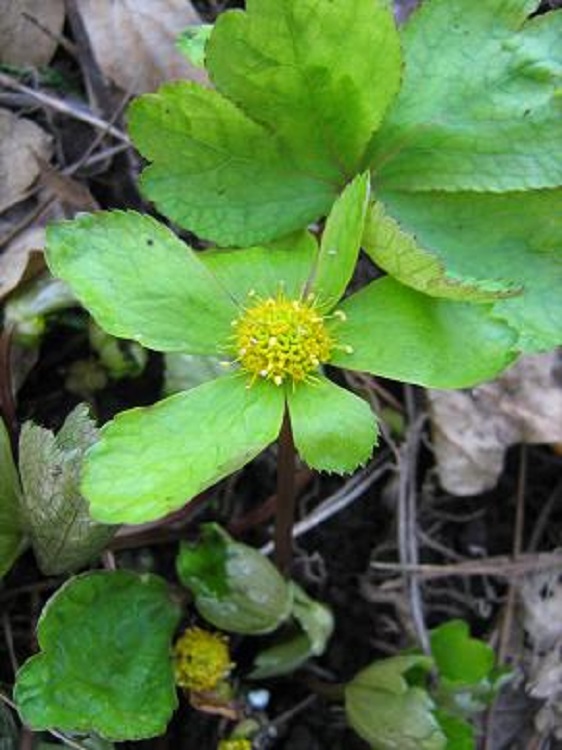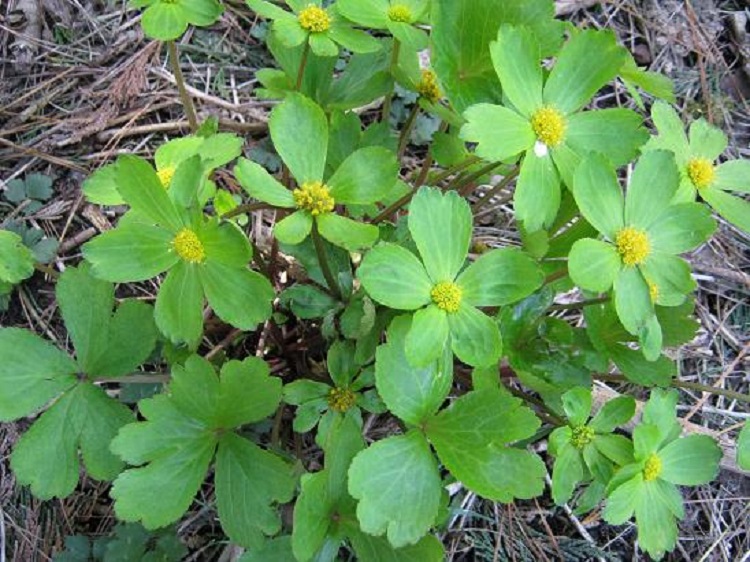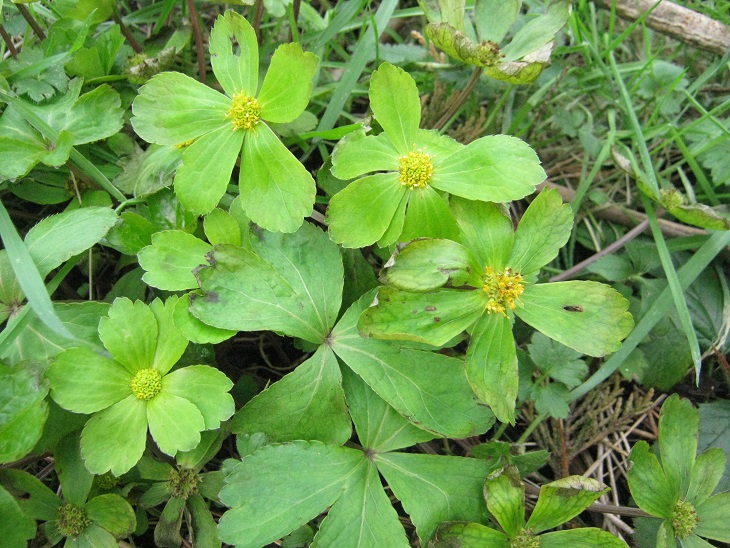 |
One of those plants that is easily overlooked but which performs reliably in most situations.
I have just got around to planting it in the woods where it is reaonably safe from encroaching weeds.
I should plant more of them really - I'm not sure why I only ever plant one of anything? It comes from central Europe where it grows on the edges of woodlands in mountains in the company of Hellebores. I couldn't understand why it wasn't spreading through the bed until I noticed that the rabbits were eating it in preference to almost anything else. I have built a little fence around it for now, and will move a piece into the shade garden (which has a rabbit fence) while I think about the best way forward. In the end I have admitted defeat. Every time I plant a piece out the rabbits have it and I'm not prepared to build little fences all over the garden. Writing on the University of Bristol Botanic Garden website, Andy Winfield says: "Sanicula epipactis (syn. Hacquetia epipactis) was originally named after Belsazar Hacquet from Carnolia (now Slovenia), a man who lived in the 18th century and was a war surgeon by trade, but had many strings to his bow. He explored the Julian Alps extensively producing a four-volume work on the geology of the region; with an obvious love of his homeland and its nature, he also collected native plant specimens for his herbarium, over 4,000 in total. Of these specimens was Sanicula epipactis, known in Slovenia as the toothed starfish flower, (hvězdnatec zubatý to be precise) appearing in deciduous forests of the Alpine foothills through a few pockets of South East Europe. In winter there is no trace, it dies back to ground level and beyond, staying out of reach from hungry snufflers; you would think nothing is there. Here in Bristol it wakes up in March, away from all the extravagant spring arrivals elsewhere in the Garden, it flowers incognito; lime green leaf like bracts surround a small yellow inflorescence that stick close to the ground. A plant you have to work to enjoy, first to find it and then to stoop down for a closer look; the green is vibrant, and its habit is perky giving an all-round cheerful disposition that can only make you smile when you see it, just getting on with its own thing in its own way. The flowers are soon joined by verdant leaves which nestle amongst the flowers forming a small jaunty clump. Plants like to feel at home and as a woodland plant Sanicula epipactis enjoys its life in the shadows, my pet name for it is the shady daisy, and a spot not too dry; plant it nice and deep and it’ll think it’s under Slovenian beech. It’s becoming more widely available to buy, and if you have a spot in your Garden that fits the bill I’d recommend it." Writing in the Bulletin of the AGS in 1953, Gwendolyn Cadney says: "In a shady corner of the garden, which is slightly damp, two woodland plants are making their modest show. Dondia (Hacquetia) epipactis, a member of the Umbelliferae, and a rather uncommon plant of certain European mountain woods, does not appear to be very generally grown, though it is very easy, and one might do worse than encourage its quaint flowers. The golden flower-umbels are surrounded by a wide six-leaved involucre of greenish yellow, and they rise on three-inch stems from the palmate foliage which develops a little later. It flowers very early in the year, often in January, even before the shrill " winter aconite," and it has its little hour in our garden before the arresting purity of Trillium grandiflorum deflects our eyes." |
|
| 20th February 2009 | ||


